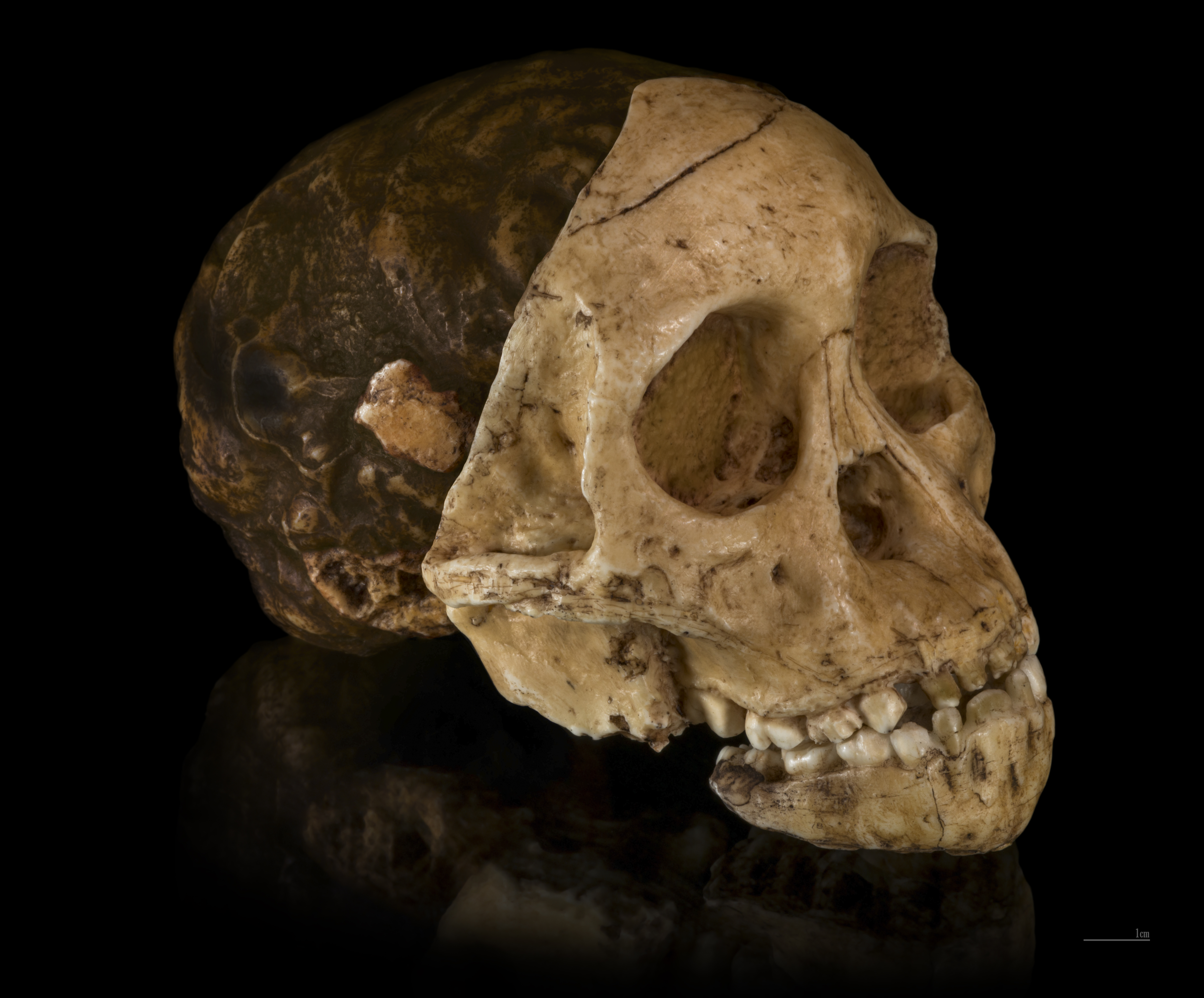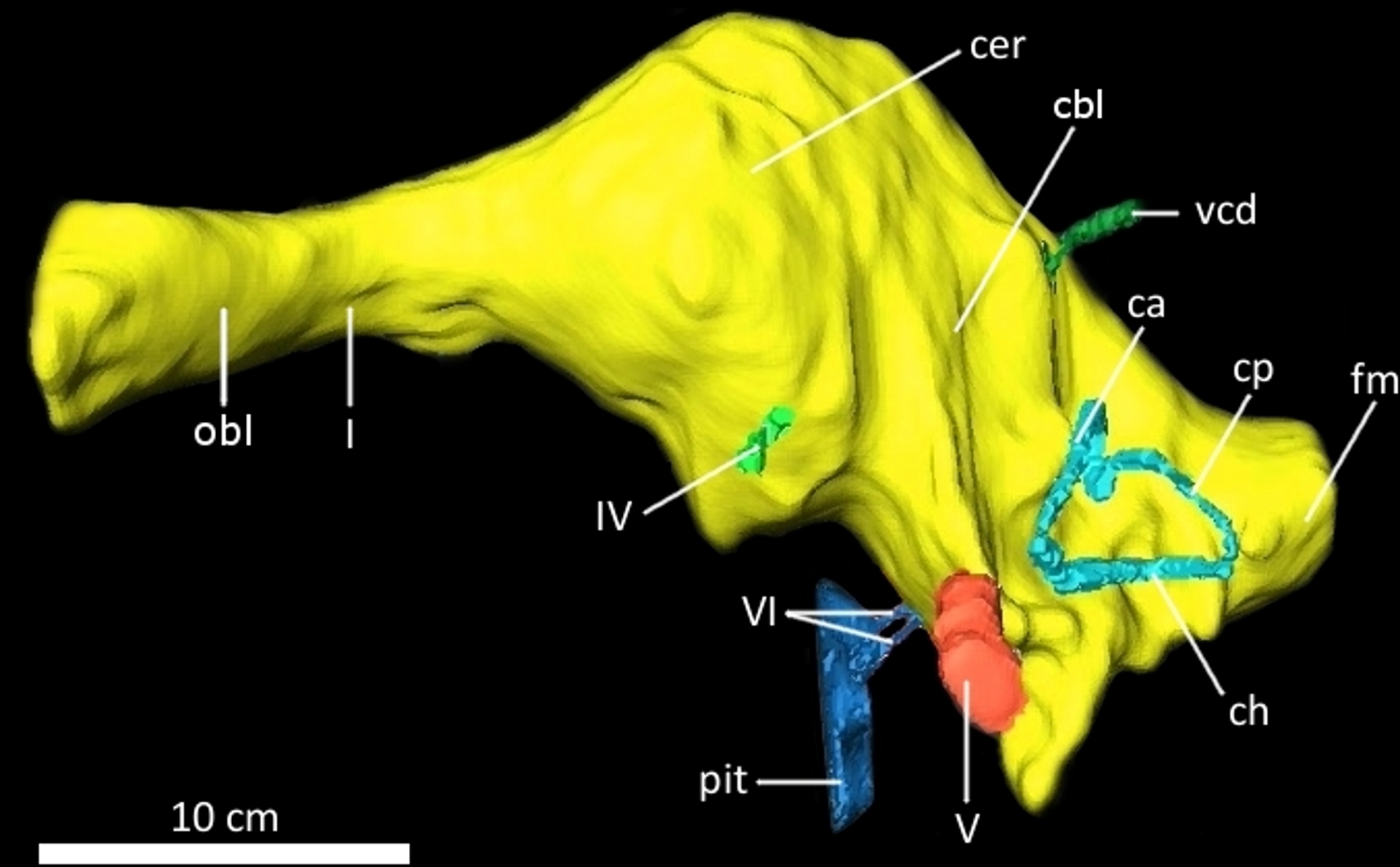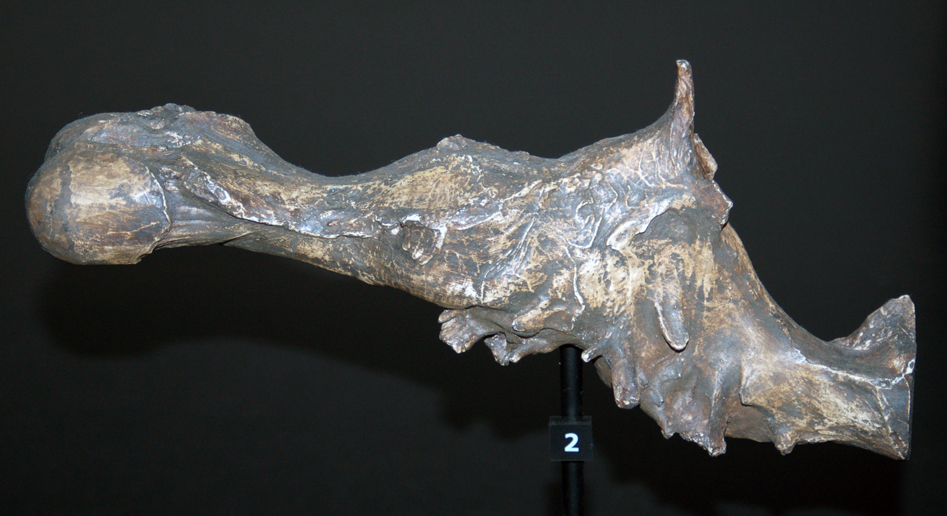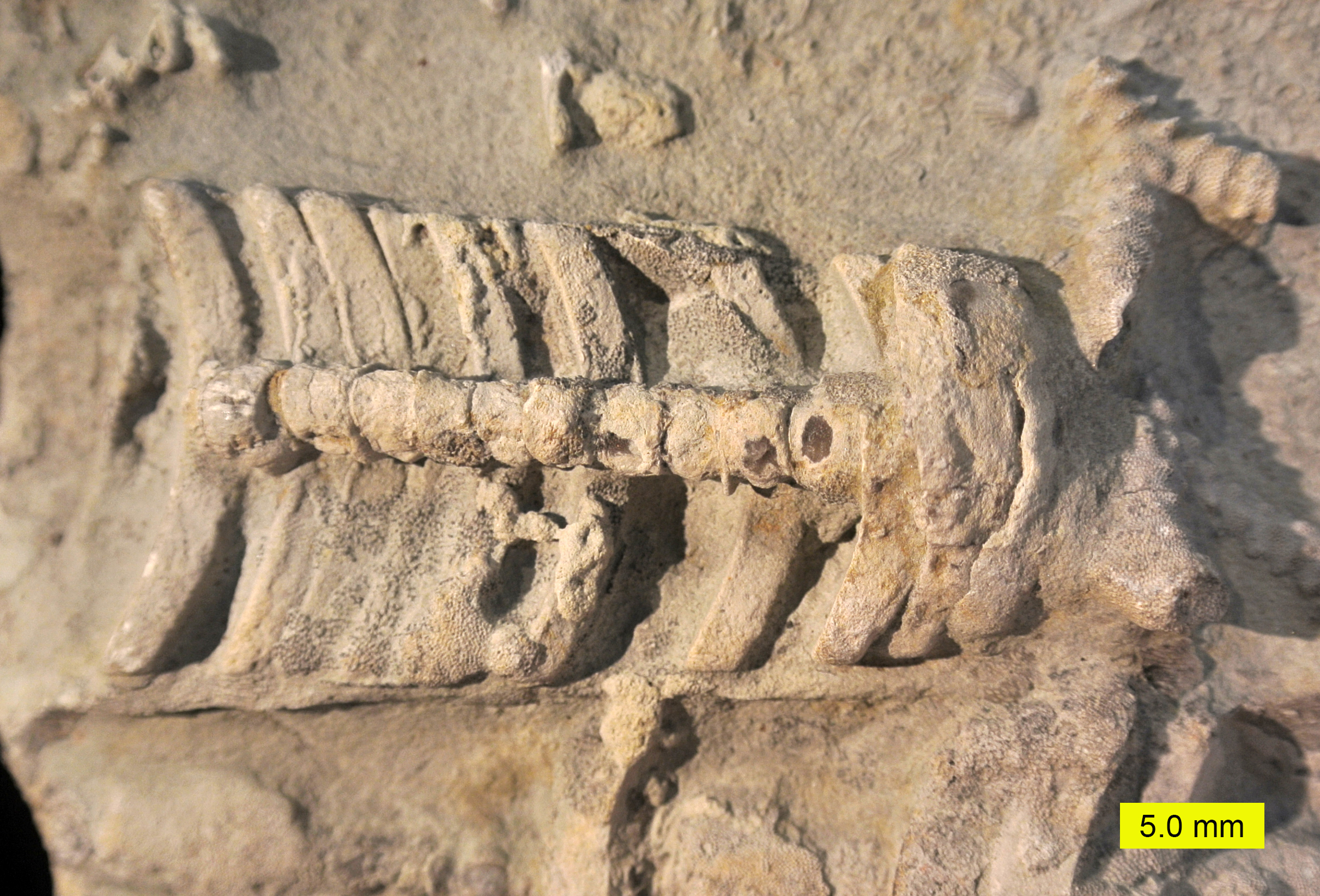Cranial endocast on:
[Wikipedia]
[Google]
[Amazon]
 An endocast is the internal cast of a hollow object, often referring to the
An endocast is the internal cast of a hollow object, often referring to the

 Natural cranial endocasts are also known. The famous
Natural cranial endocasts are also known. The famous
 Endocast fossils from animals with shells that easily disintegrate or dissolve can often be encountered free from their mold fossil, like the
Endocast fossils from animals with shells that easily disintegrate or dissolve can often be encountered free from their mold fossil, like the
 An endocast is the internal cast of a hollow object, often referring to the
An endocast is the internal cast of a hollow object, often referring to the cranial vault
The cranial vault is the space in the skull within the neurocranium, occupied by the brain.
Development
In humans, the cranial vault is imperfectly composed in newborns, to allow the large human head to pass through the birth canal. During bi ...
in the study of brain development in humans and other organisms. Endocasts can be artificially made for examining the properties of a hollow, inaccessible space, or they may occur naturally through fossil
A fossil (from Classical Latin , ) is any preserved remains, impression, or trace of any once-living thing from a past geological age. Examples include bones, shells, exoskeletons, stone imprints of animals or microbes, objects preserved ...
ization.
Cranial endocasts

Artificial casts
Endocasts of the inside of theneurocranium
In human anatomy, the neurocranium, also known as the braincase, brainpan, or brain-pan is the upper and back part of the skull, which forms a protective case around the brain. In the human skull, the neurocranium includes the calvaria or skul ...
(braincase) are often made in paleoanthropology to study brain structures and hemispheric specialization in extinct human ancestors. While an endocast can not directly reveal brain structure, it can allow scientists to gauge the size of areas of the brain situated close to the surface, notably Wernicke's and Broca's area
Broca's area, or the Broca area (, also , ), is a region in the frontal lobe of the dominant hemisphere, usually the left, of the brain with functions linked to speech production.
Language processing has been linked to Broca's area since Pierr ...
s, responsible for interpreting and producing speech.
Traditionally, the casting material is some form of rubber
Rubber, also called India rubber, latex, Amazonian rubber, ''caucho'', or ''caoutchouc'', as initially produced, consists of polymers of the organic compound isoprene, with minor impurities of other organic compounds. Thailand, Malaysia, an ...
or rubber-like material. The openings to the brain cavity, except for the '' foramen magnum'', are closed, and the liquid rubber is slushed around in the empty cranial vault and then left to set. The resulting hollow sphere can then be drained of air like a balloon and pulled out through the ''foramen magnum''. Rubber endocasts like these were the standard practice until the end of the 20th century and are still used in some fields. However, scientists are increasingly utilizing computerized tomography scanning technology to create digital endocasts in order to avoid risking damage to valuable specimens.
Natural endocasts
 Natural cranial endocasts are also known. The famous
Natural cranial endocasts are also known. The famous Taung Child
The Taung Child (or Taung Baby) is the fossilised skull of a young '' Australopithecus africanus''. It was discovered in 1924 by quarrymen working for the Northern Lime Company in Taung, South Africa. Raymond Dart described it as a new specie ...
, the first ''Australopithecus
''Australopithecus'' (, ; ) is a genus of early hominins that existed in Africa during the Late Pliocene and Early Pleistocene. The genus ''Homo'' (which includes modern humans) emerged within ''Australopithecus'', as sister to e.g. ''Austral ...
'' found, consists of a natural endocast connected to the facial portion of the skull. It was the shape of the brain that allowed Raymond Dart to conclude that the fossil was that of a human relative rather than an extinct ape
Apes (collectively Hominoidea ) are a clade of Old World simians native to sub-Saharan Africa and Southeast Asia (though they were more widespread in Africa, most of Asia, and as well as Europe in prehistory), which together with its sister g ...
.
Mammal endocasts are particularly useful, as they resemble the fresh brain with the dura mater
In neuroanatomy, dura mater is a thick membrane made of dense irregular connective tissue that surrounds the brain and spinal cord. It is the outermost of the three layers of membrane called the meninges that protect the central nervous system. ...
in place. Such "fossil brains" are known from several hundred different mammal species. More than a hundred natural casts of the cranial vault of '' Bathygenys'' (a small merycodont) alone are known, some having identifiable features down to the major gyri
In neuroanatomy, a gyrus (pl. gyri) is a ridge on the cerebral cortex. It is generally surrounded by one or more sulci (depressions or furrows; sg. ''sulcus''). Gyri and sulci create the folded appearance of the brain in humans and other m ...
. Several hundred casts of various dinosaur
Dinosaurs are a diverse group of reptiles of the clade Dinosauria. They first appeared during the Triassic period, between 243 and 233.23 million years ago (mya), although the exact origin and timing of the evolution of dinosaurs is t ...
s are known, among them a ''Tyrannosaurus
''Tyrannosaurus'' is a genus of large theropod dinosaur. The species ''Tyrannosaurus rex'' (''rex'' meaning "king" in Latin), often called ''T. rex'' or colloquially ''T-Rex'', is one of the best represented theropods. ''Tyrannosaurus'' live ...
'' brain vault, showing the animal had limited intelligence and a well-developed sense of smell. The oldest known natural cranial endocast is a fossil fish brain from a Holocephalan, some 300 million years old.
Endocasts of other hollows
 Endocast fossils from animals with shells that easily disintegrate or dissolve can often be encountered free from their mold fossil, like the
Endocast fossils from animals with shells that easily disintegrate or dissolve can often be encountered free from their mold fossil, like the aragonite
Aragonite is a carbonate mineral, one of the three most common naturally occurring crystal forms of calcium carbonate, (the other forms being the minerals calcite and vaterite). It is formed by biological and physical processes, including pre ...
shells of certain molluscs and the tests of sea urchins. A frequently occurring form is the internal mold of brachiopod
Brachiopods (), phylum Brachiopoda, are a phylum of trochozoan animals that have hard "valves" (shells) on the upper and lower surfaces, unlike the left and right arrangement in bivalve molluscs. Brachiopod valves are hinged at the rear end, w ...
s and bivalves. In the quite symmetrical genus brachiopod '' Pentamerus'', the endocast resembles a vulva
The vulva (plural: vulvas or vulvae; derived from Latin for wrapper or covering) consists of the external female sex organs. The vulva includes the mons pubis (or mons veneris), labia majora, labia minora, clitoris, vestibular bulbs, vulv ...
, giving these fossils the name ''Schamstein'' or ''Mutterstein'' ("shame stone" or "mother stone") in German
German(s) may refer to:
* Germany (of or related to)
** Germania (historical use)
* Germans, citizens of Germany, people of German ancestry, or native speakers of the German language
** For citizens of Germany, see also German nationality law
**Ge ...
, while some bivalve endocasts are traditionally known as heart-of-stone or bull hearts in Britain. The "Venus of Svinesund", an early Mesolithic Venus figurine
A Venus figurine is any Upper Palaeolithic statuette portraying a woman, usually carved in the round.Fagan, Brian M., Beck, Charlotte, "Venus Figurines", ''The Oxford Companion to Archaeology'', 1996, Oxford University Press, pp. 740–741 Most ...
from Norway
Norway, officially the Kingdom of Norway, is a Nordic country in Northern Europe, the mainland territory of which comprises the western and northernmost portion of the Scandinavian Peninsula. The remote Arctic island of Jan Mayen and the ...
, is a re-worked Ordovician
The Ordovician ( ) is a geologic period and system, the second of six periods of the Paleozoic Era. The Ordovician spans 41.6 million years from the end of the Cambrian Period million years ago (Mya) to the start of the Silurian Period Mya.
T ...
bivalve endocast. Endocasts are also known to develop from snail shells and sea urchins, and even from the stomach hollow of jellyfish
Jellyfish and sea jellies are the informal common names given to the medusa-phase of certain gelatinous members of the subphylum Medusozoa, a major part of the phylum Cnidaria. Jellyfish are mainly free-swimming marine animals with umbrell ...
, a group that rarely leaves fossil traces.
Artificial endocasts are sometimes made from blood vessels for medical or anatomical reasons. The blood vessel of an organ (e.g. brain
A brain is an organ that serves as the center of the nervous system in all vertebrate and most invertebrate animals. It is located in the head, usually close to the sensory organs for senses such as vision. It is the most complex organ in a ve ...
or liver
The liver is a major organ only found in vertebrates which performs many essential biological functions such as detoxification of the organism, and the synthesis of proteins and biochemicals necessary for digestion and growth. In humans, it ...
) is injected with a resin
In polymer chemistry and materials science, resin is a solid or highly viscous substance of plant or synthetic origin that is typically convertible into polymers. Resins are usually mixtures of organic compounds. This article focuses on n ...
. When it is set, the organ itself is dissolved, leaving a three-dimensional image of the blood supply to the organ.
References
{{Reflist Anatomy Biological anthropology Anthropometry Animal anatomy Fossilization